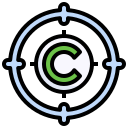Storytelling That Feels Real, Not Righteous
Cast your reader as the capable hero, not a guilty bystander. A coastal neighborhood reduced litter after a volunteer named Miguel put storm-drain markers near schools; our copy invited families to “Protect our dolphins in five minutes today.” The result felt local, proud, and doable. Who is your Miguel?
Storytelling That Feels Real, Not Righteous
Swap abstract tons of CO2 for relatable equivalents: trees planted, miles driven avoided, kettles boiled, or days of home electricity. “Your switch saves enough energy to stream 40 movies without guilt” beats “Reduce emissions by 0.03 tons.” Add a concrete equivalency to your headline and test the lift this week.






